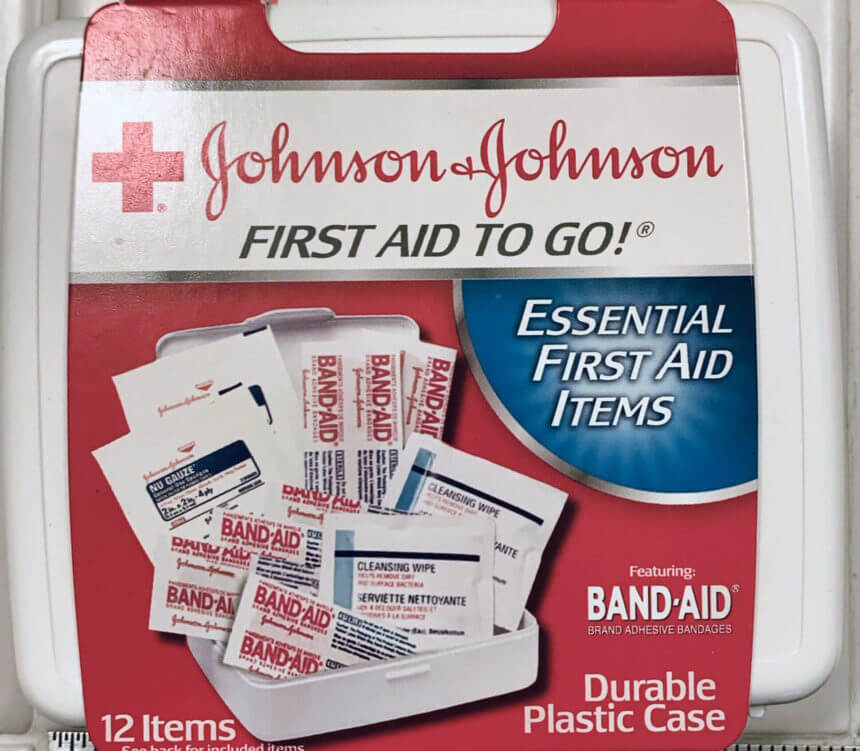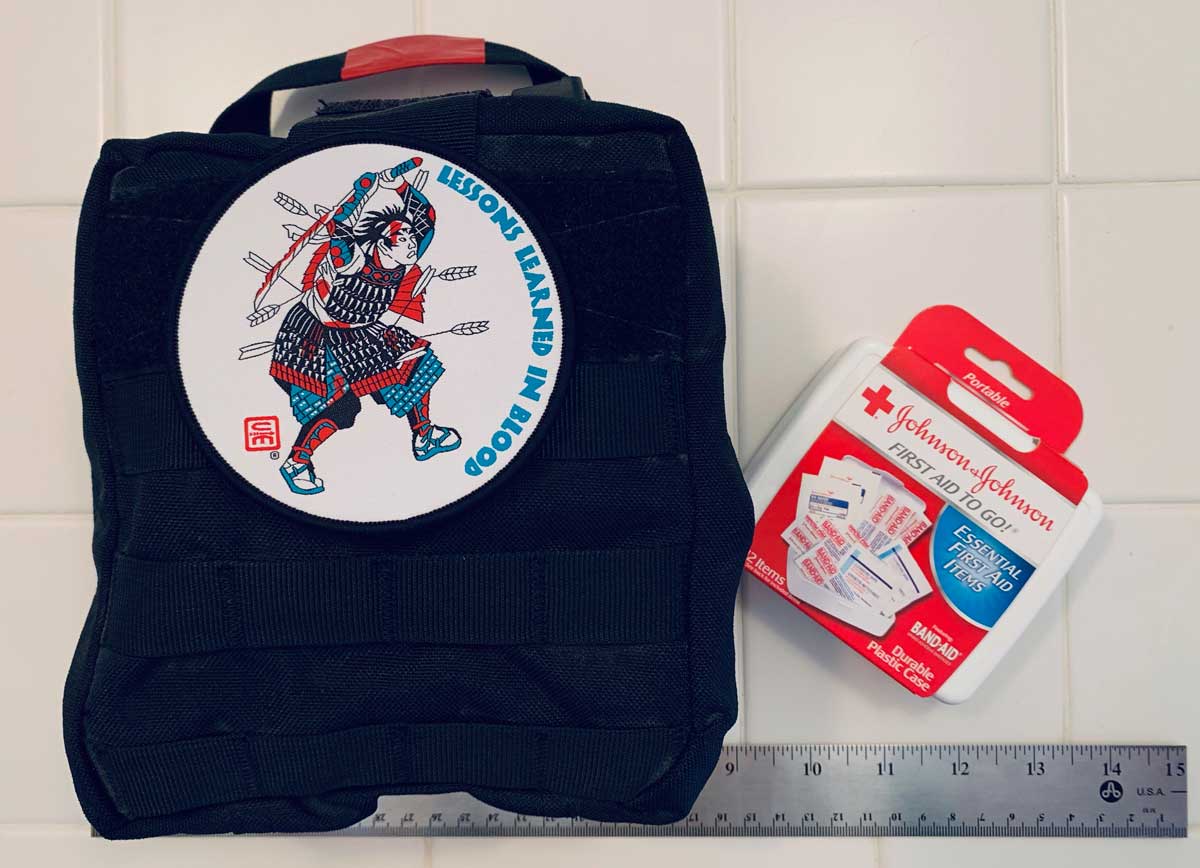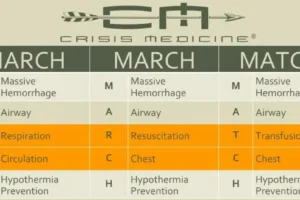
A First Aid kit is not an IFAK
- Posted by Mike Shertz MD/18D
- Categories Equipment, MARCH
🕖 Reading Time, 4 minutes
Although an IFAK is technically an Individual First Aid Kit, it should more appropriately be thought of as an Individual Trauma Kit.
First Aid kits and First Aid courses, as commonly thought of, deal with topics more akin to bandaids than with tourniquets and life-threatening injuries.
We keep IFAKs in our vehicles and co-locate them in the house with fire extinguishers and flashlights. If you’re planning to be prepared in an emergency, like a fire, then you may need medical equipment, and more light is never a bad thing.
Our IFAKS are stocked to provide life-saving interventions. We prepare for massive hemorrhage, impaired airways, and tension pneumothoraces. A first aid kit, more appropriately called a boo-boo kit (or snivel kit, a term my wife bristles at) is a convenience: no one ever died of a scrape or a splinter. Massive hemorrhage can kill a casualty in minutes. Lives may depend on knowing what is in your kit, where it is, and how to use those items.
Therefore, we do not store convenience First Aid items in our IFAKs.
Bandaids, antiseptic wipes, ice packs, and moleskin may be part of your first aid kit. However, we recommend your first aid kit be kept separate from your IFAK (or should we call it your ITK?). The reason is this: much like scissors are never where you expect them to be because someone has “borrowed them” (and neglected to put them back), if there are every-day items in your IFAK/ITK that someone may need to get into, like bandaids and pain relievers, they will likely trot off with your IFAK/ITK. It will never be where you expect it to be in an emergency.
Similarly, we do not stock items typically referred to as the “12 essentials” (or however many are on your list) in our IFAK/ITKs.
That is also a separate kit. [Many people advise being prepared with essentials including sun/rain protection, fire starters, whistles, navigation tools including a map and compass, etc.] The possible exception would be adding a light to your IFAK/ITK.
Whether you buy generic bandaids or Johnson & Johnson doesn’t matter. A bandaid’s job is largely to keep small cuts from getting blood on your clothing and to keep them clean. For buying the supplies for your IFAK/ITK, quality matters because having proven life-saving supplies in an emergency where someone’s life depends on your equipment matters.
Don’t buy your fire extinguishers at the Dollar Tree and don’t buy your tourniquets on Amazon.
For information on what is in our IFAKs and a complete packing list, you might review the blog post on IFAKs
For information on counterfeit tourniquets available on Amazon, Walmart, and others, review the blog post on counterfeit tourniquets.
Tag:IFAK
Dr. Mike Shertz is the Owner and Lead Instructor at Crisis Medicine. Dr. Shertz is a dual-boarded Emergency Medicine and EMS physician, having spent over 30 years gaining the experience and insight to create and provide his comprehensive, science-informed, training to better prepare everyday citizens, law enforcement, EMS, and the military to manage casualties and wounded in high-risk environments. Drawing on his prior experience as an Army Special Forces medic (18D), two decades as an armed, embedded tactical medic on a regional SWAT team, and as a Fire Service and EMS medical director.
Using a combination of current and historical events, Dr. Shertz’s lectures include relevant, illustrative photos, as well as hands-on demonstrations to demystify the how, why, when to use each emergency medical procedure you need to become a Force Multiplier for Good.





3 Comments
Deep Water Happy,
The first aid kit I referred to was an off the shelf Class B Truck kit. I bought it at an industrial safety supply house.
After buying from NAR I could see that the Class B’s contents weren’t so robust and it was like a giant boo boo kit.
John – I did. I’ve stuck to the minimal approach all along, and performed a few upgrades/eliminations as I built different sized kits for office/boat/purse. Luckily, I started with “name-brand” supplies, but made some shears/cutter swaps for flying commercially. Yay on the class! Keep learning! I know I sure have a lot more to learn!
The first aid items are out of my IFAKs and have been for awhile. As I built my IFAKs my first aids kits improved a bit. I replaced the cheap manufacturer supplied items with better quality items. Has anyone else done that?
I also got my girlfriend to finally take a class that included tourniquets.